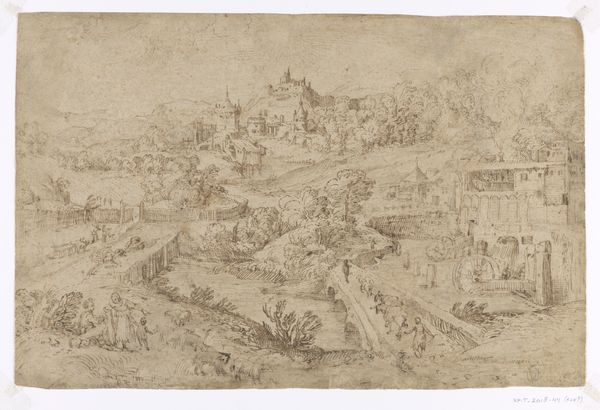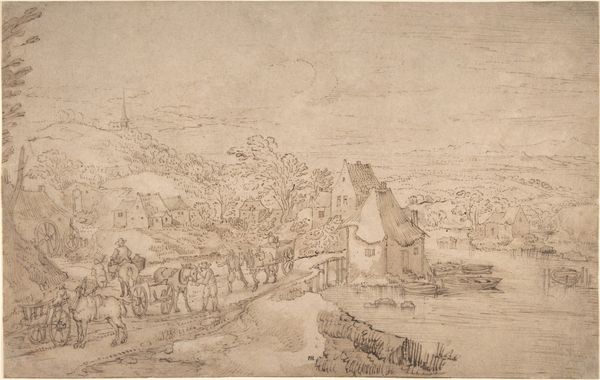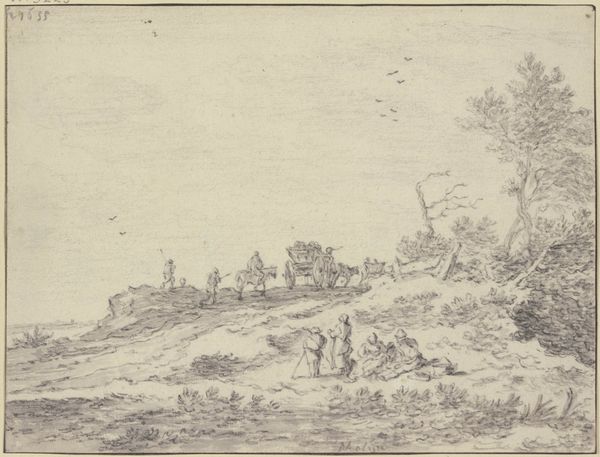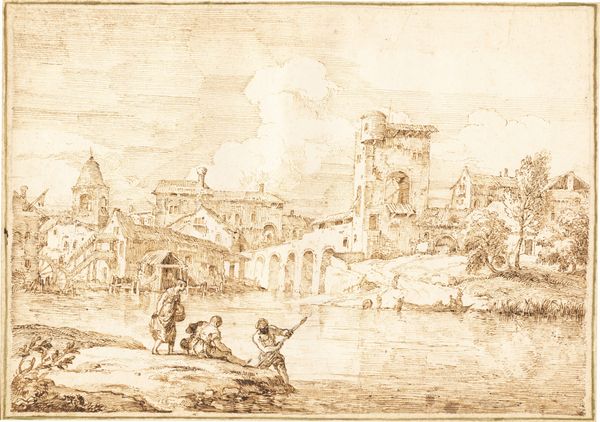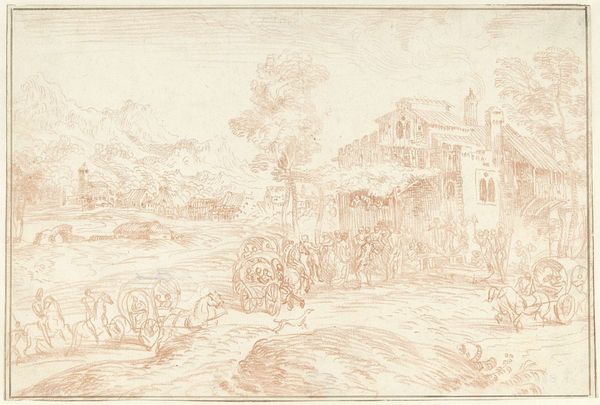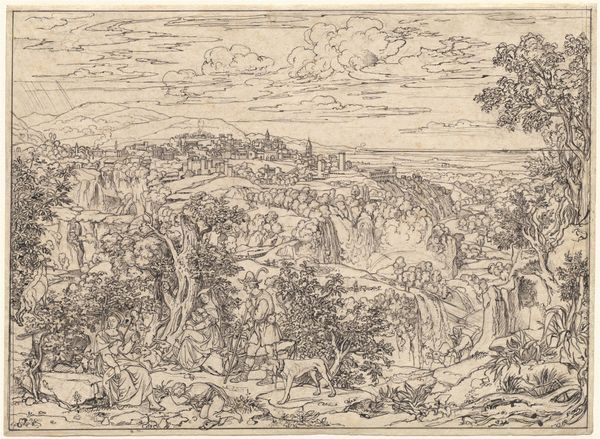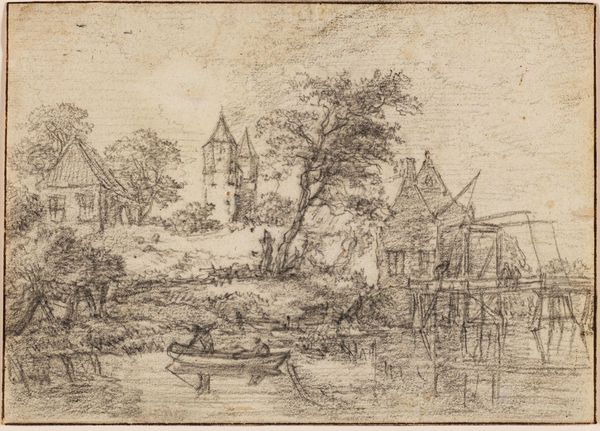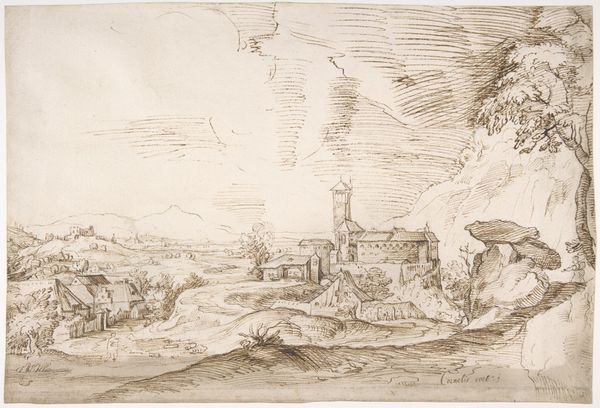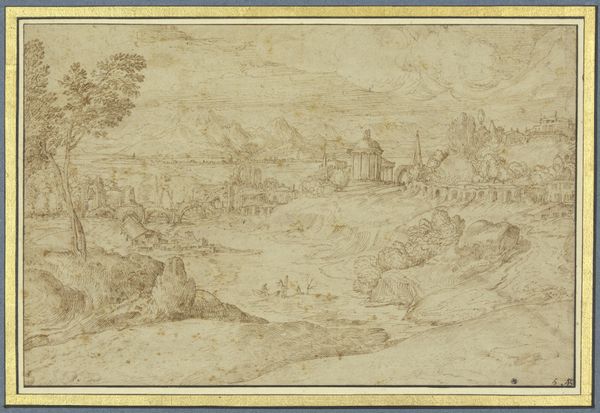![View of the Castle Sant'Angelo and the Ospedale di Santo Spirito [recto] by Étienne Dupérac](/_next/image?url=https%3A%2F%2Fd2w8kbdekdi1gv.cloudfront.net%2FeyJidWNrZXQiOiAiYXJ0ZXJhLWltYWdlcy1idWNrZXQiLCAia2V5IjogImFydHdvcmtzLzg2NTQzZTBlLTc1MmUtNDYyZS05YTEyLWQ0NWMwM2Y3YjhmOS84NjU0M2UwZS03NTJlLTQ2MmUtOWExMi1kNDVjMDNmN2I4ZjlfZnVsbC5qcGciLCAiZWRpdHMiOiB7InJlc2l6ZSI6IHsid2lkdGgiOiAxOTIwLCAiaGVpZ2h0IjogMTkyMCwgImZpdCI6ICJpbnNpZGUifX19&w=3840&q=75)
View of the Castle Sant'Angelo and the Ospedale di Santo Spirito [recto] c. 1552 - 1566
0:00
0:00
drawing, paper, ink
#
drawing
#
landscape
#
etching
#
paper
#
11_renaissance
#
ink
#
cityscape
Dimensions: overall: 28.4 x 41.6 cm (11 3/16 x 16 3/8 in.)
Copyright: National Gallery of Art: CC0 1.0
Editor: Here we have Étienne DuPérac's "View of the Castle Sant'Angelo and the Ospedale di Santo Spirito," made around 1552 to 1566 using ink on paper. There's something about the delicate lines that feels almost dreamlike, even though it's a clear cityscape. How do you interpret this work? Curator: This isn't just a picture of a city; it’s a carefully constructed narrative. DuPérac, working during the Renaissance, captured Rome at a time of immense social and religious upheaval, namely, The Reformation. The inclusion of the Ospedale di Santo Spirito, the hospital, is not incidental; it points to questions about healthcare and its relationship with socio-economic disparities. Have you considered how this might reflect contemporary debates about access to medical care and the role of institutions? Editor: That’s a fascinating point! I was focusing on the aesthetic qualities, but now I see the buildings less as monuments and more as symbols of power and responsibility. The hospital takes on new weight. Curator: Exactly! Consider, too, that architectural drawings at the time served as records but also instruments of power. Urban landscapes aren't neutral; they embody specific social relations, and this work participates in shaping, reflecting, and solidifying them. Does knowing that shift how you understand the "dreamlike" quality you mentioned earlier? Editor: It does. It feels less like escapism now and more like a commentary, subtly embedding a political argument within a beautiful scene. The precision almost feels like it’s trying to impose order on what was actually a pretty chaotic time. Curator: Precisely. The art becomes a lens through which we examine not just the city itself, but the structures, inequalities, and ideals it represents, even today. Editor: I hadn't considered that. Thanks, this has made me realize how much more context I need to consider when looking at historical artwork. Curator: Absolutely. And remember, asking those questions is how we make the art of the past relevant to our present.
Comments
No comments
Be the first to comment and join the conversation on the ultimate creative platform.
